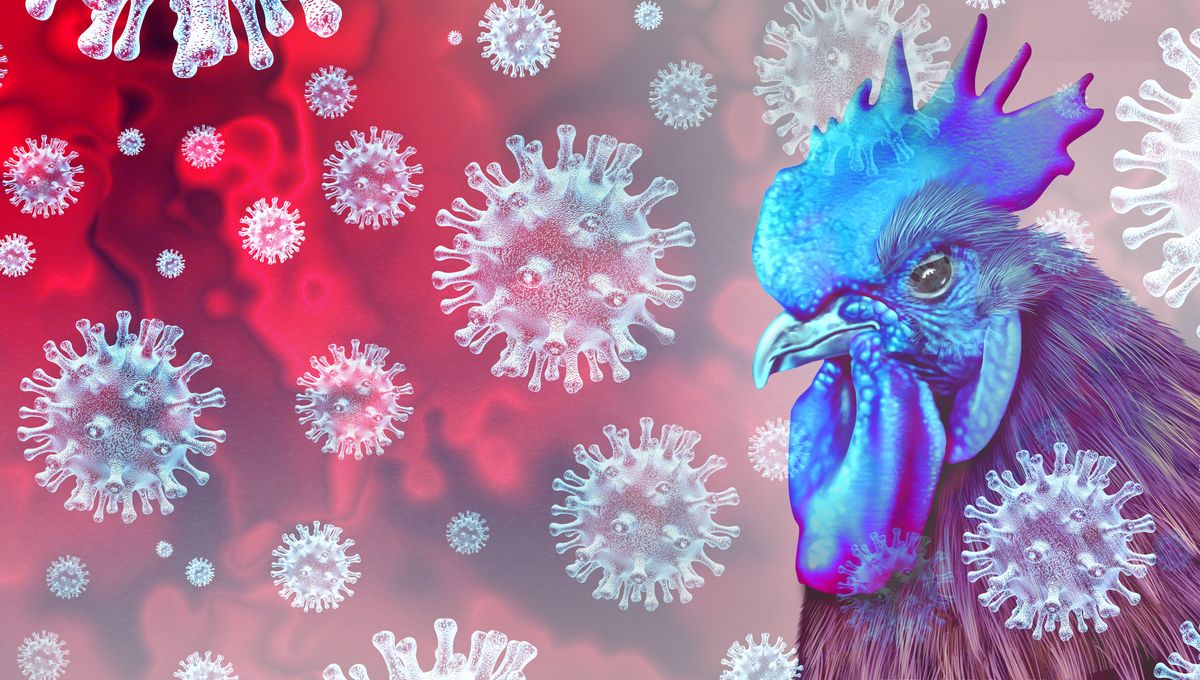
Bird flu seems to be perennially in the news at the moment, and with more and more species succumbing to the virus, concern around it is rife. While the infection normally spreads in avian species, it can also spill over into other animals, including humans, which has sparked fears of a global animal pandemic. What exactly is going on?
The latest developments
The current outbreak – which involves the H5N1 variant – began in 2020 and has resulted in the deaths of tens of millions of poultry, as well as wild birds across the globe.
In recent months, we have seen an increasing number of reports of infections in mammals – cows, goats, cats, and even a polar bear and a bottlenose dolphin have all tested positive for bird flu. Then, last month, it was reported that a person in Texas had contracted the virus after coming into contact with dairy cattle presumed to be infected. This was only the second person ever confirmed to have tested positive for H5N1 bird flu in the US.
As of Tuesday, nine US states had reported outbreaks in dairy cattle, per the Centers for Disease Control and Prevention (CDC), and milk has tested positive for H5N1 virus fragments. In the latest twist in the tale, the US government has announced it is testing ground beef in nine states for traces of the virus.
So, how worried should we be? Here’s what the experts have to say.
How is bird flu spreading?
In birds, H5N1 is spread via saliva, nasal secretions, and fecal matter – gross, we know – but quite how it’s made its way to mammals we’re not entirely sure.
“We don’t know how the virus passes from birds to mammals,” Dr James Lowe, a professor of veterinary clinical medicine at the University of Illinois Urbana-Champaign, told News Bureau life sciences editor Diana Yates in a recent interview. “The theory is that the infected cows were exposed to infected birds and their feces. That’s the most likely explanation.”
And that should offer some reassurance to us: “In most cases worldwide, transmission to mammals is likely the result of scavenging by the mammal populations on infected dead birds, and represent minimal risk of further spread,” Rowland Kao, Professor of Veterinary Epidemiology and Data Science at the University of Edinburgh, told the Science Media Centre in January.
How does it affect different species?
A lot of very different species have been infected, as detailed above, and all are affected differently. According to Lowe, the H5N1 virus is able to do this by interacting with sialic acid (SA) receptors on the surfaces of cells. “Those receptors may be more prevalent in different parts of the body in different groups of animals,” Lowe added.
“In marine mammals and some carnivorous mammals, the virus migrates to the brain to bind to SA receptors there, causing dangerous disease. In humans, the affected receptors are most abundant deep in the lungs. That’s why H5N1 infection sometimes causes pneumonia in humans.”
How concerned should we be?
It sounds scary, but, according to the experts, we should avoid panicking. The CDC states that “the current public health risk is low”, although it will continue to monitor the situation closely.
While vulnerable people may experience more severe symptoms, Lowe reassures that for most people with healthy immune systems, “infection with the H5N1 virus may be associated with mild respiratory problems, conjunctivitis, gastrointestinal problems or no symptoms at all.”
“To date, human mortality as a result of bird flu infection is extremely low.”
There is also no evidence yet that H5N1 is spreading between humans, which is comforting.
It’s one thing for a virus to infect a new species, but quite another for it to spread, as Dr Ed Hutchinson from the MRC-University of Glasgow Centre for Virus Research told Science Media Centre.
“Importantly, there is a difference between isolated infections of a new species and a virus spreading efficiently within that species. It requires a lot of changes for a bird virus to become a mammalian virus, and at the current time there is no sign that this H5N1 virus has changed from being a dangerous virus of birds to a virus that can spread easily within any mammal species.”
As for whether this has the potential to develop into a pandemic, Lowe says “there’s no indication at present that this will happen.”
On May 1, the FDA issued an update on the results of a national commercial milk sampling study that “reaffirm our assessment that the commercial milk supply is safe.” They also state that “pasteurization is effective in inactivating [Highly Pathogenic Avian Influenza] HPAI,” preliminary testing didn’t detect any “live, infectious virus,” and samples of powdered milk products and infant formula didn’t contain virus or viral fragments.
What precautions can we take?
Efforts are already underway to develop vaccines and therapies, but in the meantime, the CDC recommends avoiding direct contact with wild birds, and also other animals that may be infected, particularly those that appear sick or have died.
Those who work with potentially infected cattle should be especially careful and should avoid unprotected direct physical contact or close exposure to cattle and materials associated with them.
There may also be a benefit in getting a seasonal flu shot. “There’s some evidence that human exposure to other influenza viruses or flu vaccines allow the adult immune system to better recognize the threat, so there may be some cross protection there,” Lowe explained.
The content of this article is not intended to be a substitute for professional medical advice, diagnosis, or treatment. Always seek the advice of qualified health providers with questions you may have regarding medical conditions.
Source Link: Bird Flu: What's The Latest And How Worried Should We Be?